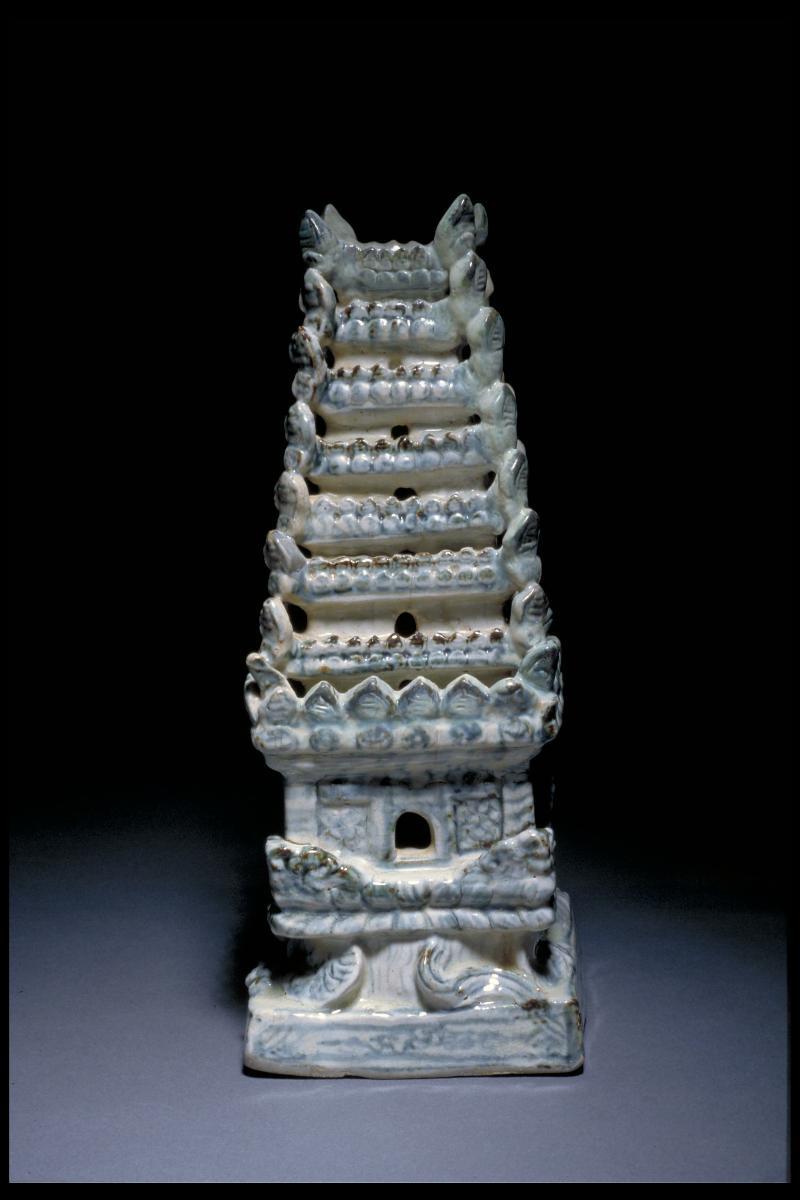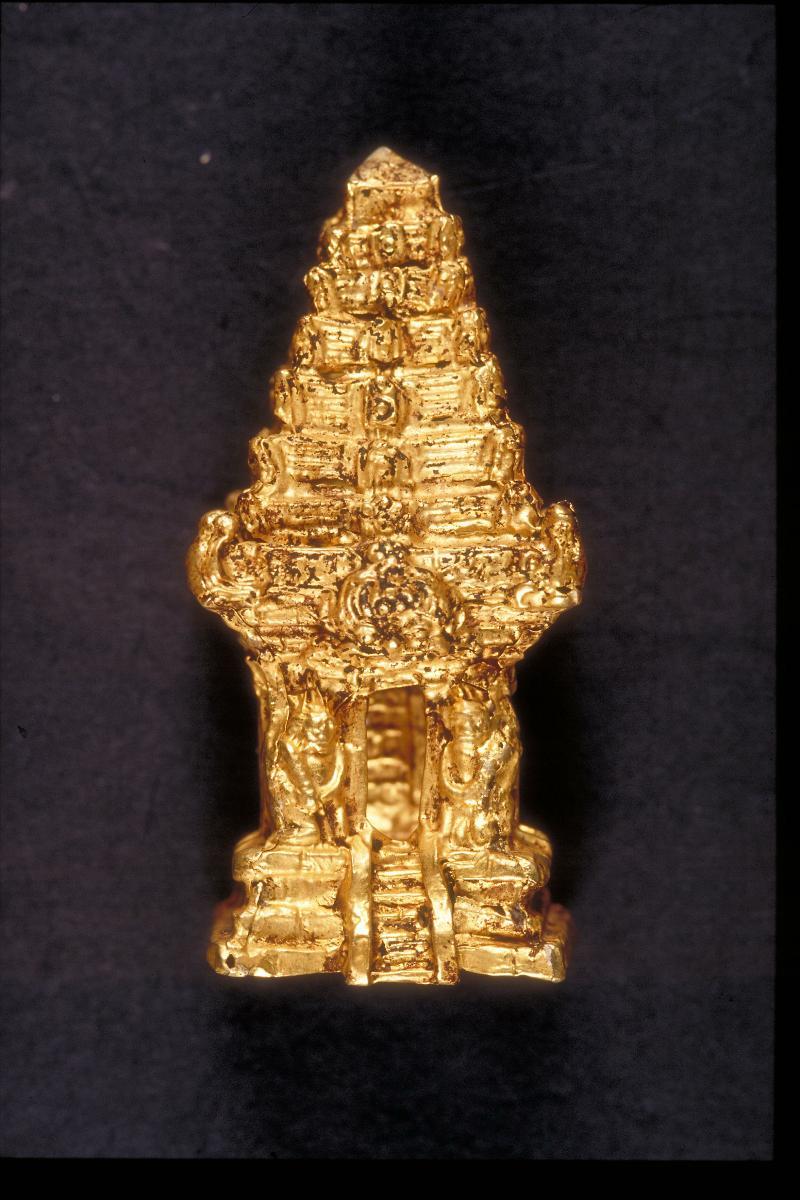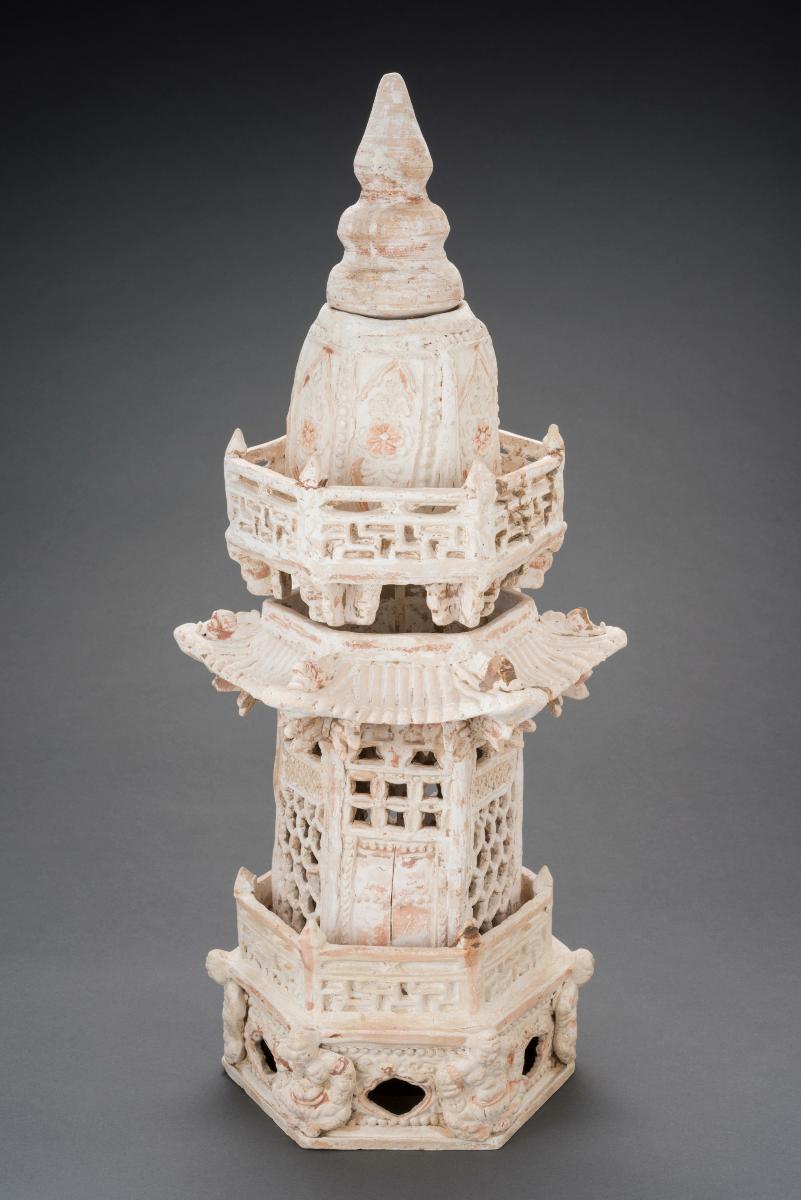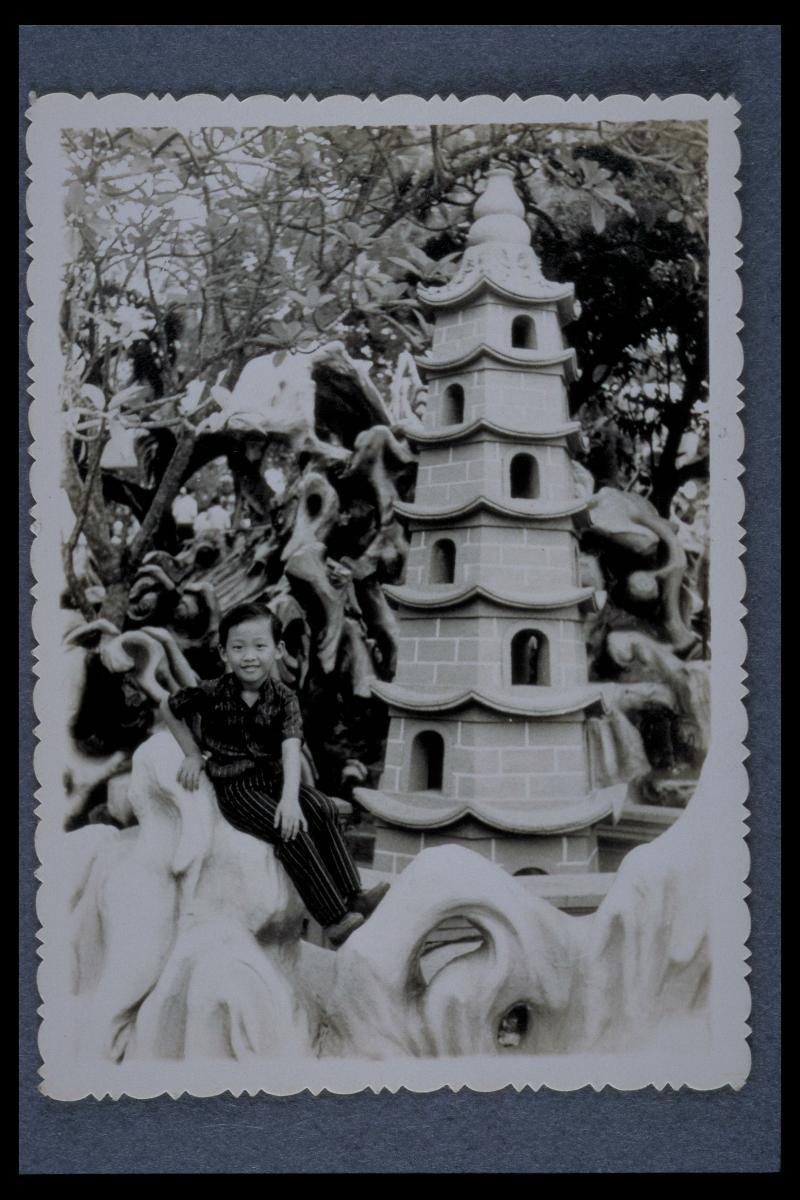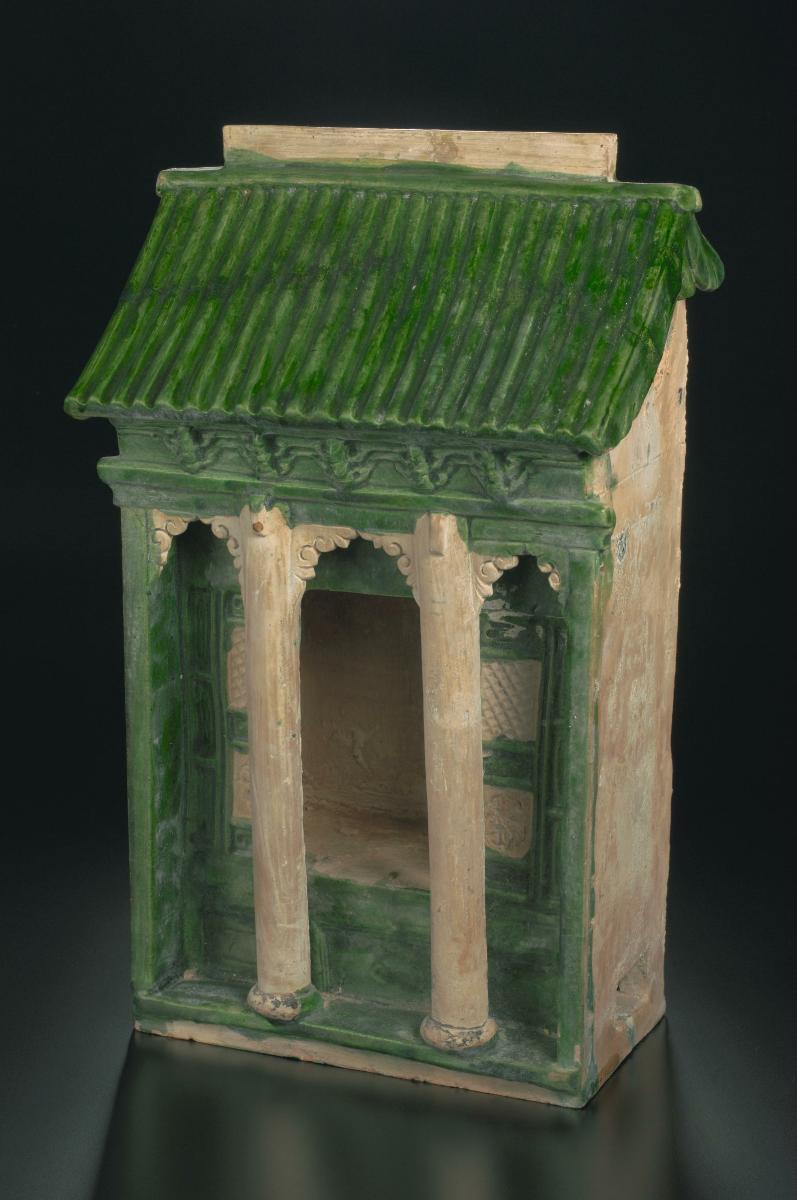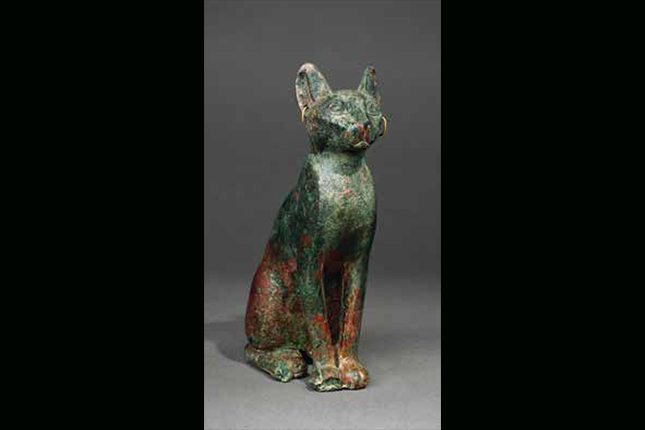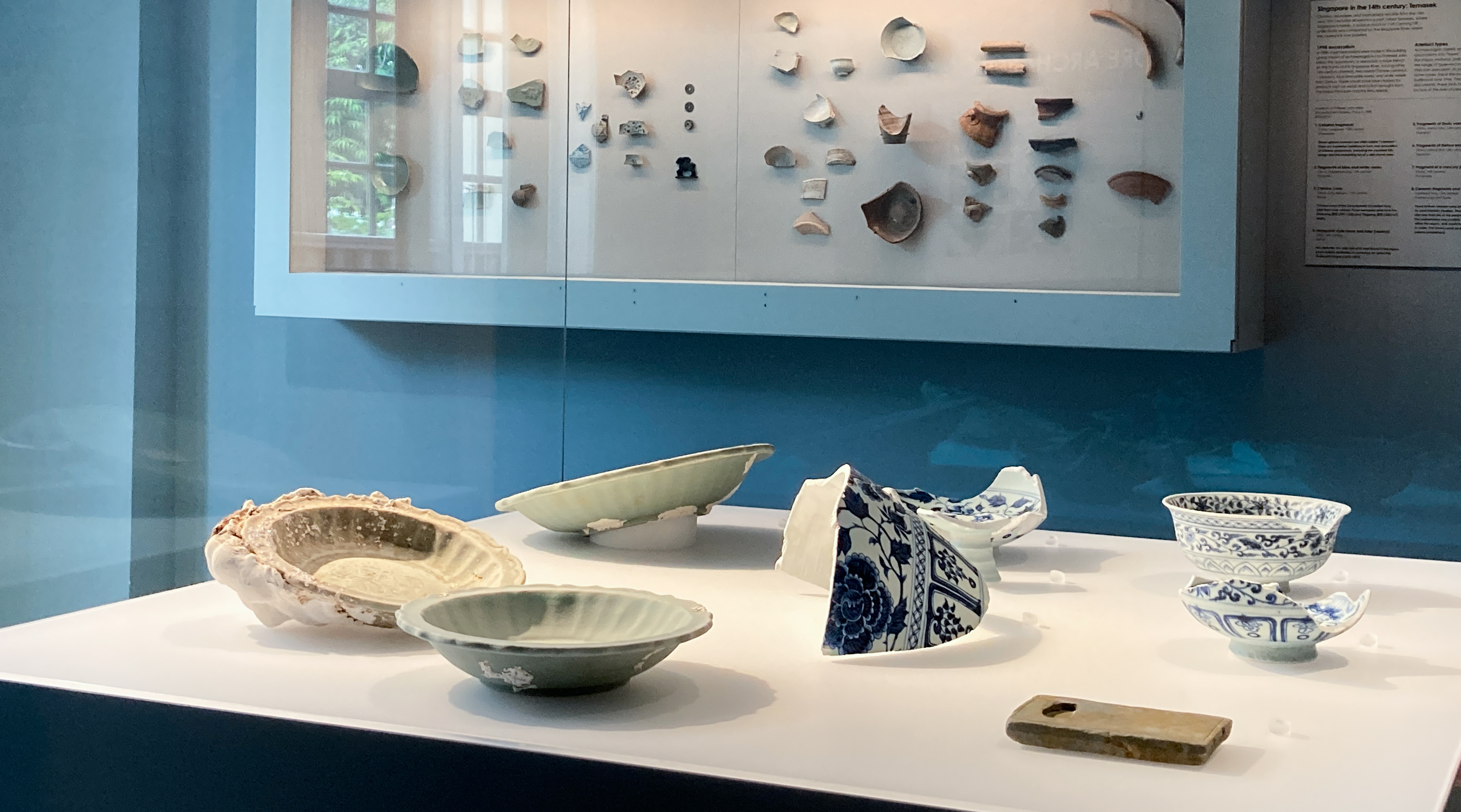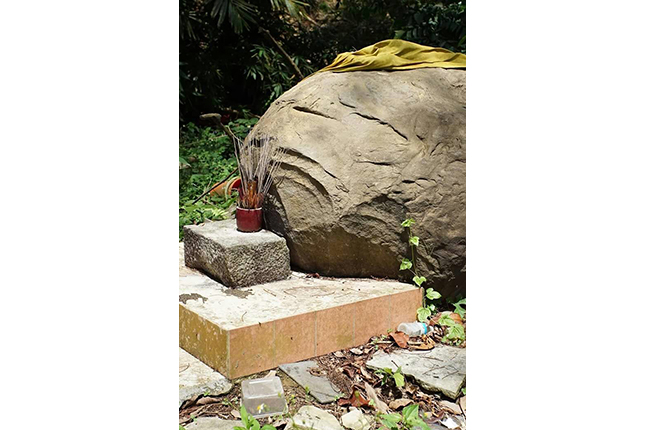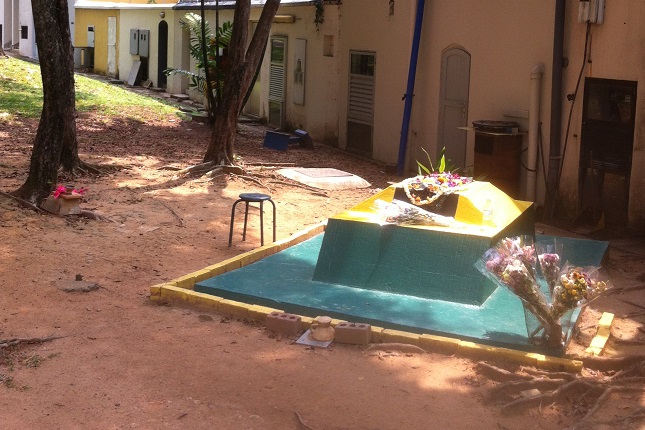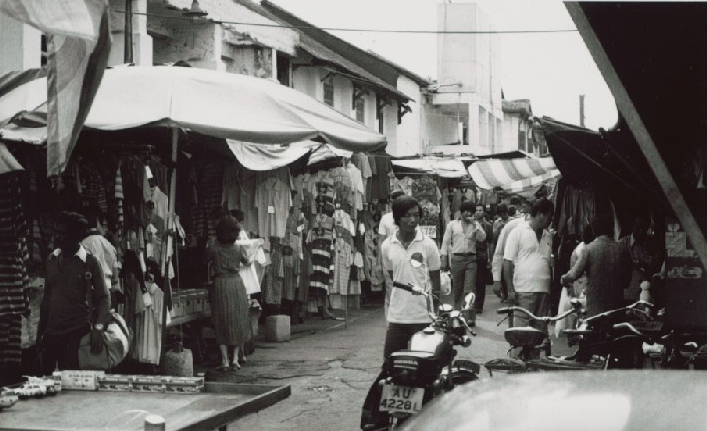This shrine was hand-built and decorated with cobalt blue pigment, a technique known as underglaze blue, as the decoration was covered with a clear glaze. The blue-and-white ceramic tradition in Vietnam was heavily influenced by the Chinese tradition. Exactly when and how the cobalt blue pigment was introduced remains unclear but close proximity to China and trade with West Asia suggest two sources for this material. Although heavily influenced by the Chinese ceramic tradition, Vietnam materials and potting styles are unique. Technically not ‘porcelain’, which is translucent and pure white, these stonewares are different in appearance from Chinese and other Southeast Asian ceramics. Vietnamese wares are typically more heavily potted and have an off-white clay body. Vietnam entered the international trade during the 14th century and produced the greatest volume and variety of wares for Southeast Asia, particularly Indonesia, the Philippines and Malaysia. However, by the 16th century, due to intense competition from the Chinese kilns, the export of Vietnamese wares to these markets was greatly reduced.




